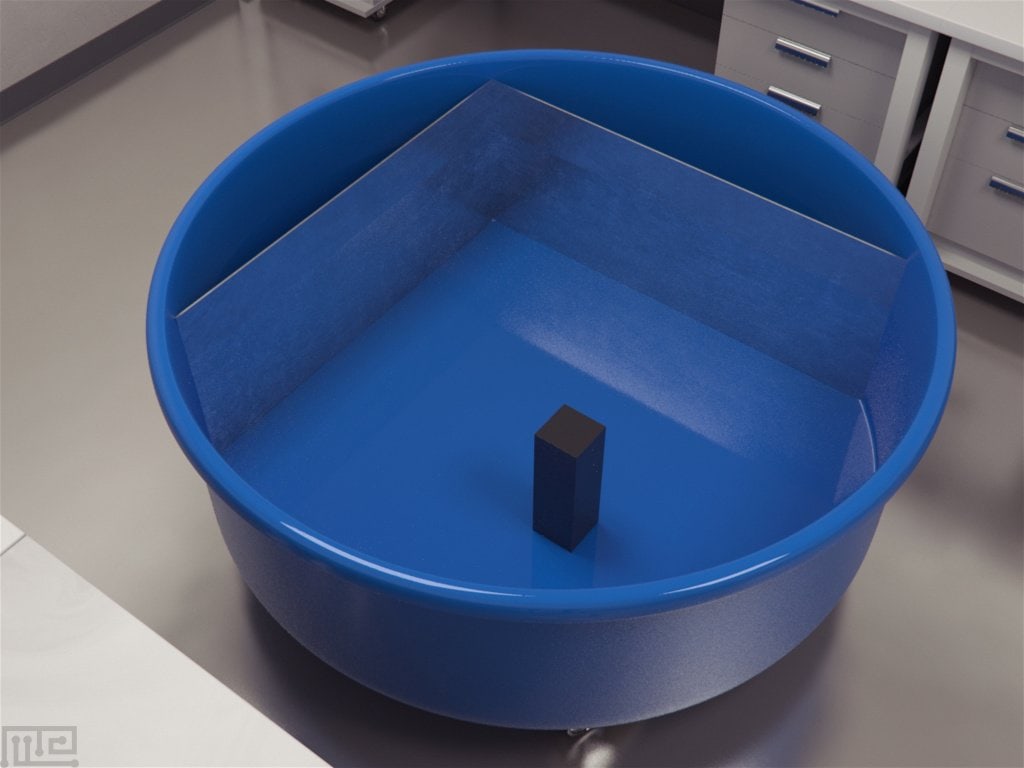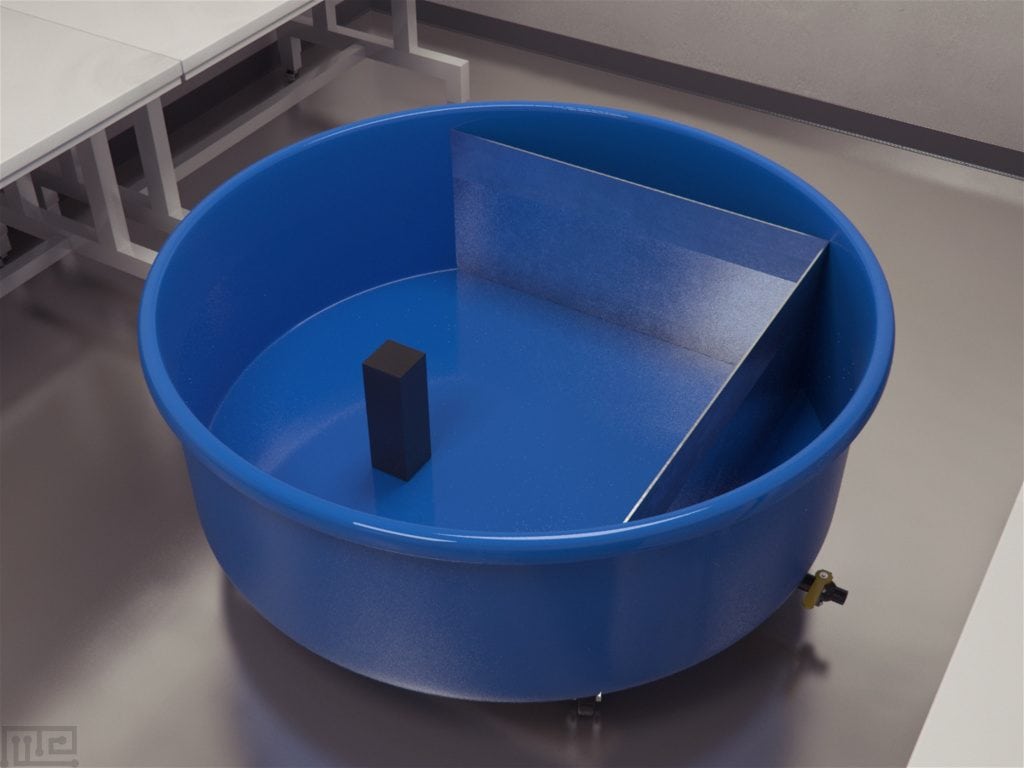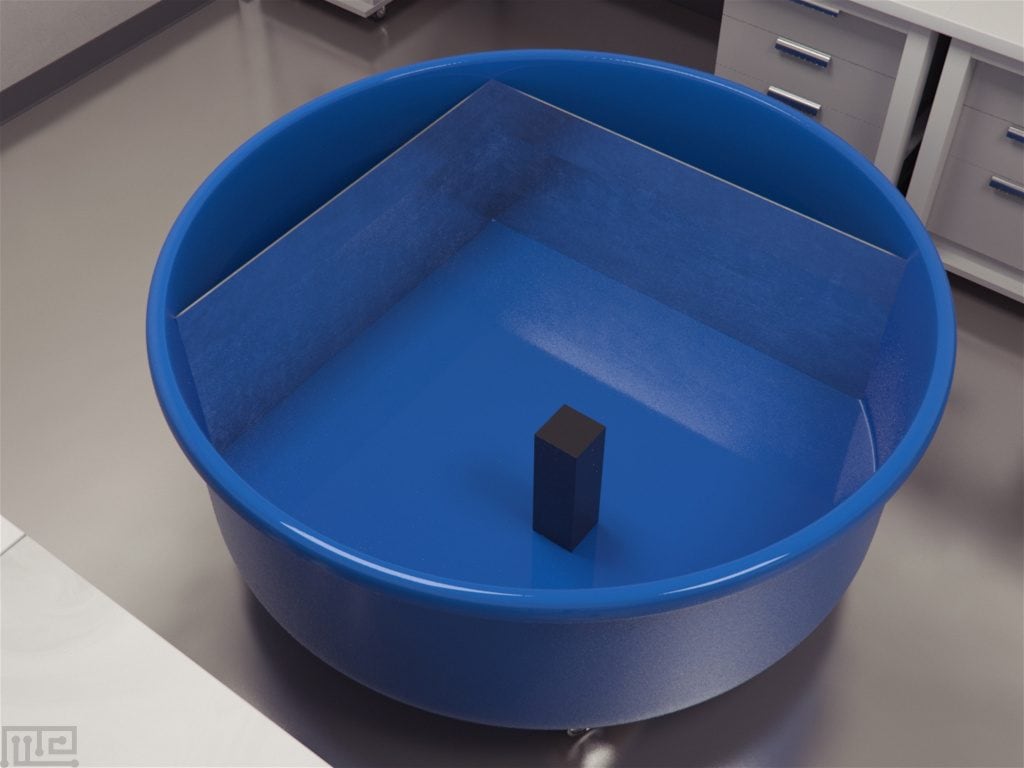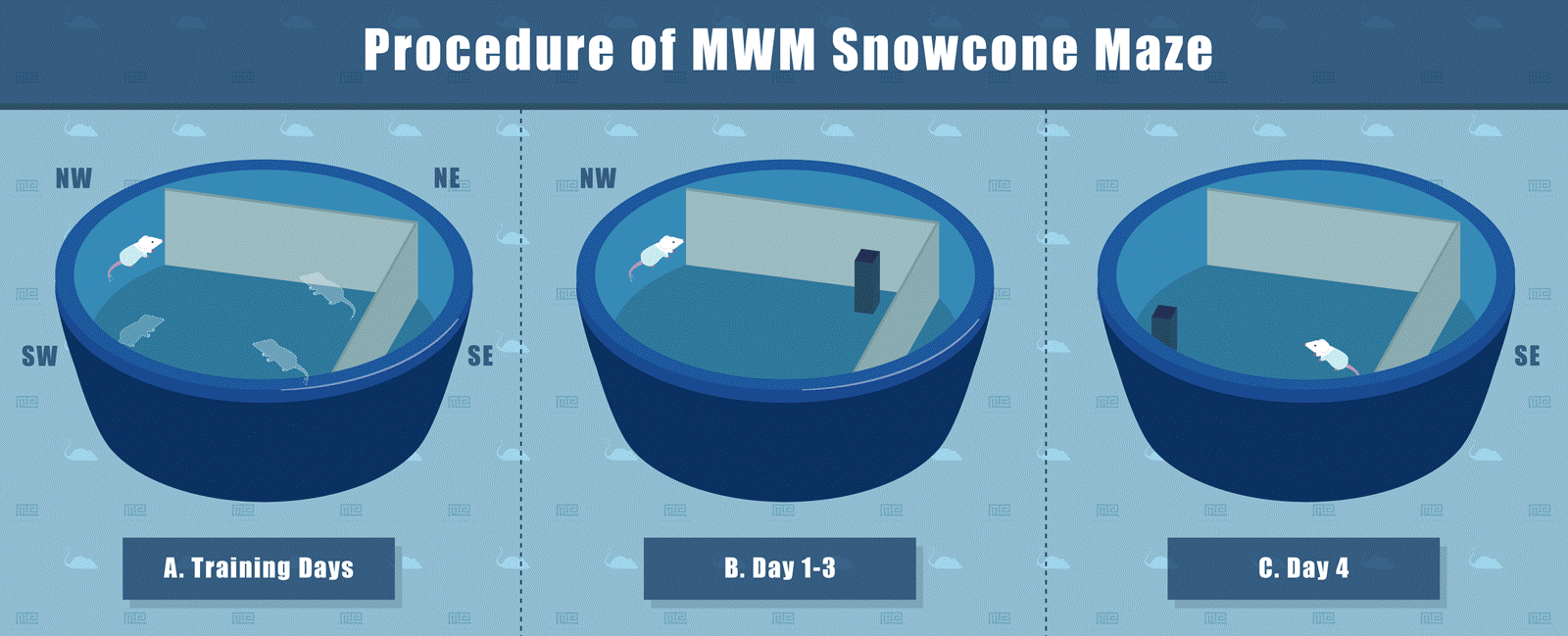Description
The MazeEngineers Snowcone Morris Water Maze modification utilizes the MWM as a base. It comes with two stainless steel inserts to fit the Morris Water Maze of your choice.
Typically, the tub can be filled with 0.3m (11 inches) of water. These accessory inserts create a snow cone shape in the Morris Water Maze. This square corner formed by the inserts acts as a geometric cue
A square (10 x 10 cm) black Pexiglas platform is provided. It is typically placed 25 cm from the pool edge.
Researchers often place an opaque coloured balloon measuring roughly 20 cm
in diameter was hung 15 cm above the platform. This is not included
Price & Dimensions
4 Feet Tub
$ 790
For Modification- Acrylic or Aluminum Snow Cone Insert to fit
- Black platform
5 Feet Tub
$ 890
For Modification- Acrylic or Aluminum Snow Cone Insert to fit
- Black platform
6 Feet Tub
$ 990
For Modification- Acrylic or Aluminum Snow Cone Insert to fit
- Black platform
Are you an academic scientist and creator?
Learn how your lab can tech transfer this and similar devices from your lab to industry.
Documentation
Introduction
The snowcone maze is another modification of the traditional Morris water task (Morris, 1984) used to study spatial learning and memory in rodents. With the addition of the angular shape as a geometric referent (Keeley et al., 2013), the snowcone maze’s novel design conveniently allows for a more nuanced study and testing of spatial navigation strategies in rodents.
The snowcone maze provides two different types of spatial cues. The geometric cue is operationalized by way of the tub’s single right-angled corner, forming the overall snowcone-like shape, and the landmark cue is presented in the form of an opaque colored balloon positioned above or near the location of the escape platform. The task is designed to identify and distinguish between preferences in cue-based navigation by presenting the rodent with two different sources of information, and seeing which of the two is favored.
The apparatus offers many applications in the study of sex differences in cue strategies among rodents. Studies of this nature have furthered discoveries on spatial strategies and the correlations between the brain and the behavior by comparing the fundamental differences in brain anatomy of male and female rodents, such as densities of hippocampal subregions (Keeley et al., 2013).
Apparatus and Equipment
The snowcone maze set-up uses the original Morris water maze tank as its base, with the square corner modification provided by additional stainless steel inserts coinciding with the pool border. The addition of the 90-degree corner in one quadrant as a geometric cue by way of inserts gives the apparatus its distinct snowcone shape.
The tank is typically filled to a depth of 0.3 m with opaque water. A square black plexiglass escape platform is placed in one of the four quadrants during pretraining, visible 1 cm above the water’s surface. In addition to the geometric cue of the snowcone maze, an opaque colored balloon of 20 cm in diameter can be used as a landmark cue, positioned right above the escape platform’s location. The presentation of these two spatial cues serves as the snowcone maze’s key feature, providing distinct options to the rodent.
Training Protocol
Pre-training
During training for the snowcone maze task, rodents are first familiarized with general MWM procedures and consequently introduced to the two spatial cues present in the set-up. For the first phase of training, the escape platform is placed in the quadrant with the 90-degree corner with the balloon positioned directly above it. Typically, these initial trials take place during the first three days of training. In this manner, both the geometric cue (corner) and the landmark cue (balloon) is present, and rodents then learn to associate the two with the location of the escape platform. Rodents are released into the water and allowed 120s to reach the escape platform. If they are not successful, the researcher guides the rodent to the platform. Once the rodent is on the platform, it remains there for a total of 15s. Five trials are held on each training day.
For the second phase of training, the escape platform and landmark balloon are then placed in the quadrant opposite to its initial position in the corner. This takes place during the fourth day of training. The change in location aims to ensure the rodent’s usage of both the landmark cue and the geometric cue in navigating the maze. During all trials, latency (time it takes to reach the platform) and path length are recorded using a timer and video-tracking technology such as Noldus Ethovison XT.
Probe Trials
During probe trials, the escape platform and the landmark cue is removed. Rodents are placed in the tank and allowed 120s to reach the escape platform. In this procedure, researchers can observe which cue is more salient to the rodent, by measuring additional variables such as the percentage of time spent in the quadrant with the 90-degree angle, as well as the rodent’s heading angle. During all trials, latency (time it takes to reach the platform) and path length are also recorded using a timer and Noldus Ethovision XT.
Applications
A significant application of the snowcone maze is in discerning sex differences in spatial navigation strategies among rodents (Rodriguez et al., 2010; Keeley et al., 2013). Studies of sex differences in spatial behavior give way to comparisons of fundamental differences in the anatomy and biochemistry of the brain, such as densities of hippocampal subregions and estradiol levels (Keeley et al., 2013); the knowledge that can guide discoveries in spatial navigation studies in humans.
Sample Data
The sample data is represented by plotting the mean dwell time of rodents in the geometric cue quadrant between males and females. As can be seen from the graph, male rodents spent a considerably higher amount of time in the geometric cue quadrant than female rodents in both probe trials, therefore suggesting that male rodents are biased towards the geometric environmental cue. Correspondingly, female rodents exhibit preference for the other environmental cue presented, namely the landmark balloon.
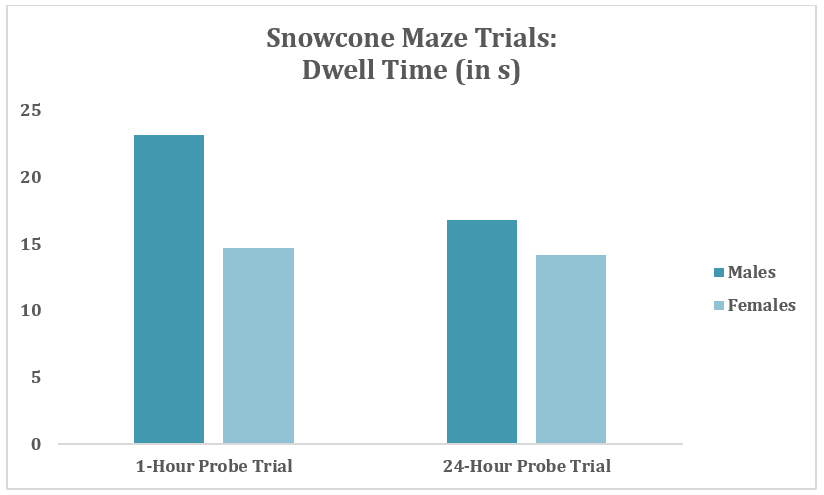
Strengths & Limitations
Strengths
The simplicity of the Morris water task allows for a stellar addition of the snowcone maze’s distinct shape, thereby designing a tool that conveniently provides a clear distinction between different sources of spatial information. Specifically, the snowcone maze offers the opportunity to examine different ways of solving a simple spatial task by emphasizing the use of differential environmental cues, namely the geometric aspect of the tank and the landmark cue.
By putting the two environmental cues in conflict in opposite directions, clear preferential differences may be observed.
Limitations
The task of finding the escape platform in the snowcone maze necessitates extensive training procedures for the rodents, similar to other MWM experiments. However, this problem can be solved with the application of the straight swim channel.
Summary and Key Points
- The snowcone maze, which is a modification of the traditional Morris water task, offers a nuanced study of spatial navigation strategies among rodents
- The geometric cue is presented through the 90-degree angle formed by stainless steel inserts in one of four quadrants, and the landmark cue is presented through a balloon placed above the escape platform
- The snowcone maze offers many applications in the study of sex differences in cue strategies among rodents
References
Morris, R. (1984). Developments of a water-maze procedure for studying spatial learning in the rat. Journal of neuroscience methods, 11(1), 47-60.
Rodríguez, C. A., Torres, A., Mackintosh, N. J., & Chamizo, V. D. (2010). Sex differences in the strategies used by rats to solve a navigation task. Journal of Experimental Psychology: Animal Behavior Processes, 36(3), 395.
Keeley, R. J., Tyndall, A. V., Scott, G. A., & Saucier, D. M. (2013). Sex difference in cue strategy in a modified version of the Morris water task: correlations between brain and behaviour. PloS one, 8(7), e69727.

